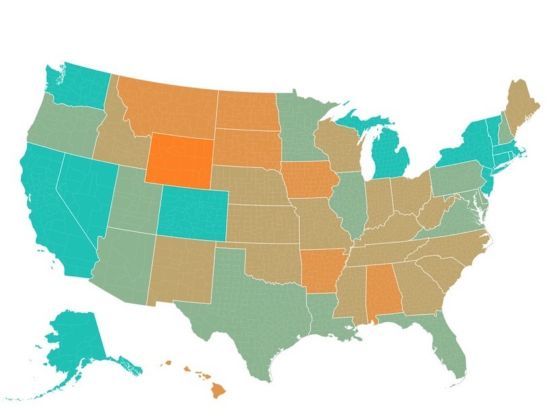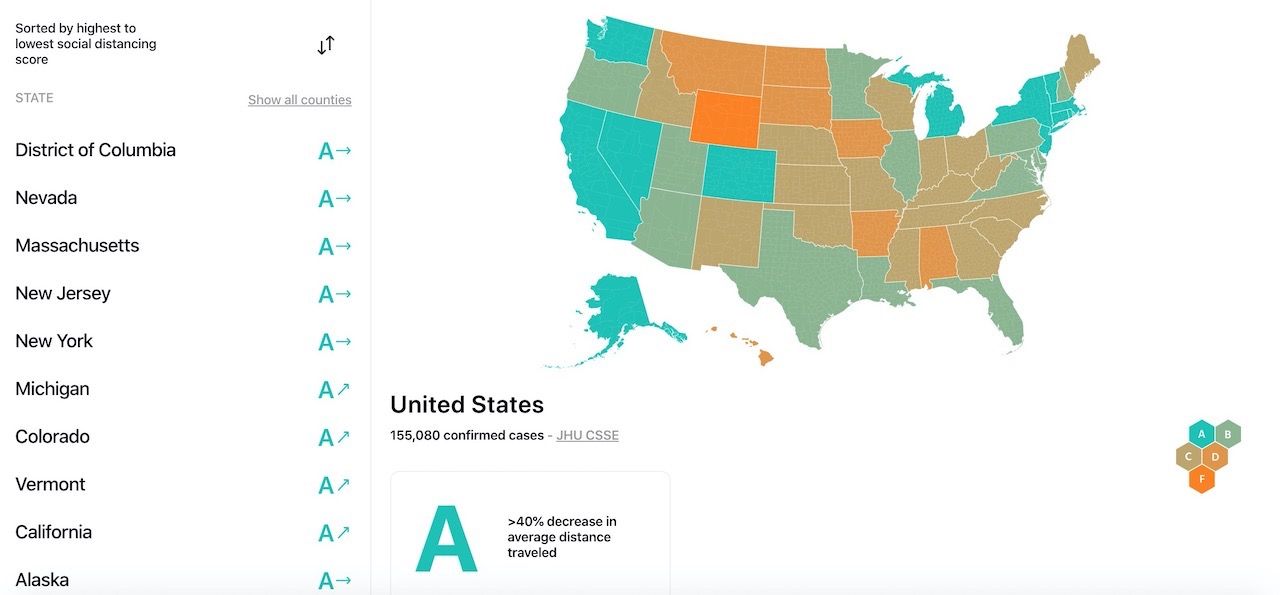A version of this article was previously published on March 27, 2020, and was updated on March 31, 2020, with more information.
In a world where just about everything is traceable, it does not come as a surprise that Americans’ cell phones are now a great way to track who is self-isolating and social distancing. Unacast, a company that collects and analyzes phone GPS location data, just revealed its “Social Distancing Scoreboard” that shows which residents around the country are actually abiding by the behavior encouraged by health officials.

